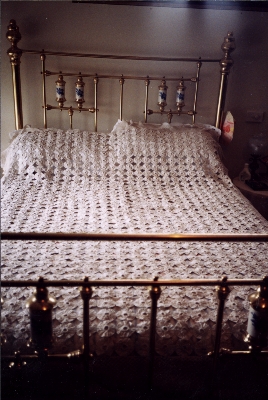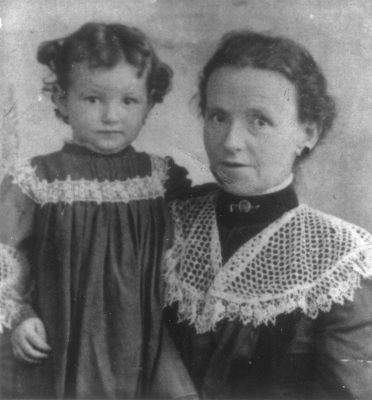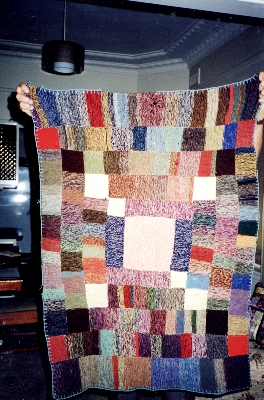Quilt No.642CS - Celia Suddull

2190 x 1510mm with 120mm wide needle netting lace.
The set includes a pillow sham 900 x 380mm and a nightgown bag 430 x 330mm. Both are edged with needle netting lace.
This quilt was commenced by Clara Hughes in England and completed on the Orient line steamer the 'Sorata' in 1884. Clara Johnson died in 1955 and the quilt is now with her great grand-daughter Celia Suddull. It is not used.
Clara Jemima Hughes (1863-1955) was in service in London and agreed to marry William Johnson who was already in Adelaide. In 1884 Clara paid 10 pound for a ticket to Adelaide on the Orient line 'Sorata', one of the first steamships. It is believed the suffolk puff quilt was completed on the voyage out.
William and Clara were married in 1886 and lived first in Broken Hill and in 1891 or 1892 the family, now including one child, George, moved to Jerilderie. William was a baker and pastrycook by trade but in Jerilderie he worked on a property as a useful and handy man and Clara as a cook and house maid. Three more children were born and all died. William drank heavily and Clara took in borders to make ends meet. A pattern she was to follow for many years.
Of 9 children born to Clara, only 4 survived to adulthood.
In 1902 the family moved to Wagga and the quilt was part of their luggage, still in pristine condition and probably never used. At one stage they owned a baker's shop in the main street but William continued to drink heavily and ownership of the shop appears to have been short lived. Clara continued to take in borders.
In 1911 William was appointed head chef at the Wagga Experiment farm at a salary off 5 pounds a week. He was drinking less and their fortunes seem to have improved.
In 1914 William died from the result of a sulky accident. He was 51. Clara was 53, went to work and continued to take in borders.
Clara Johnson died in 1955 with the quilt still rarely if ever used.
[Compiled from extensive family sources and with the assistance of family members by Wendy Hucker for NQR]



Related Quilts:
1500 x 1200mm
1580 x 1830mm
2439 x 1829mm
2415 x 2110mm
1740 x 1210mm.






